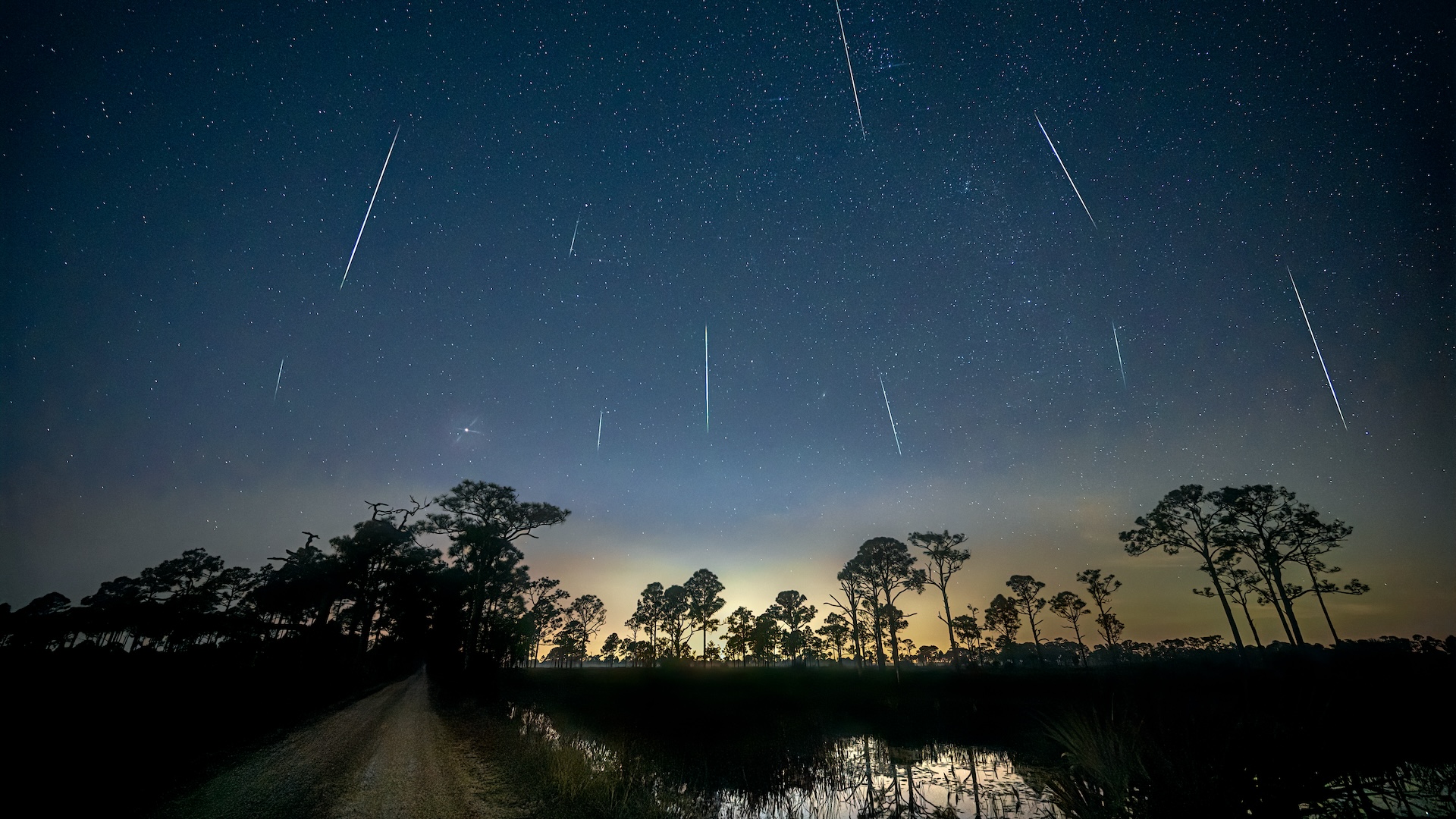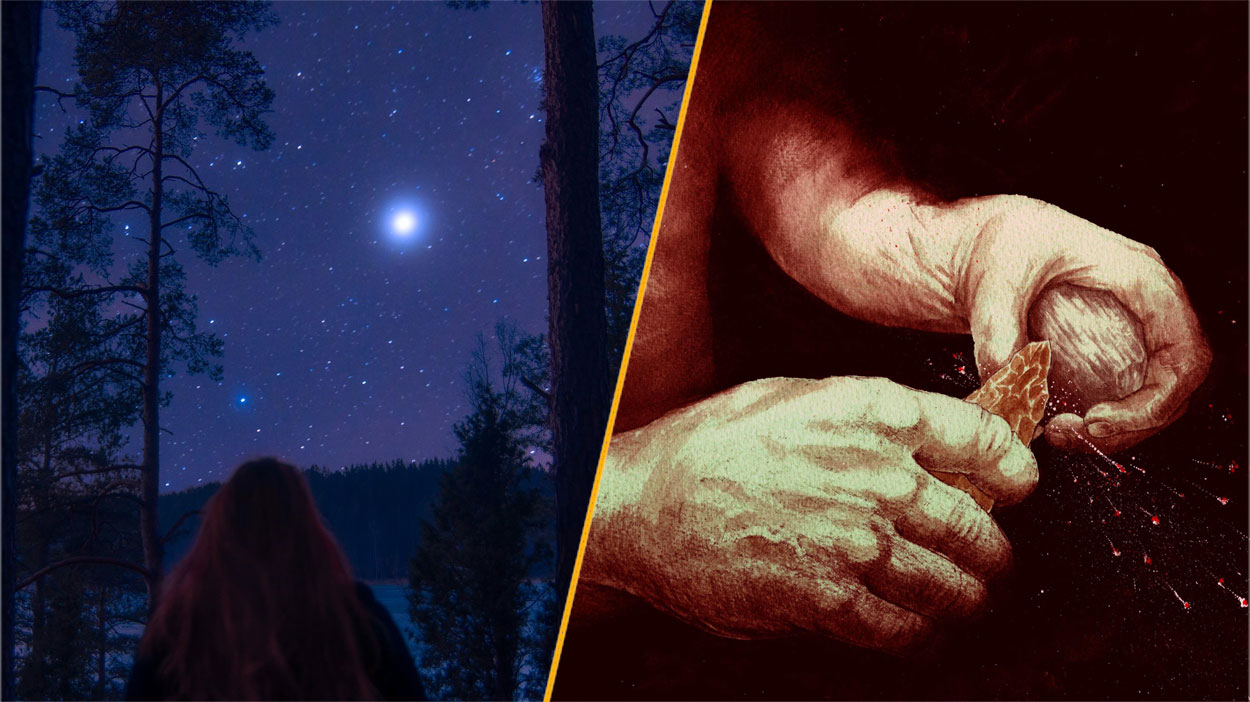The Geminid meteor shower peaks tonight! How to see the year's last big display of 'shooting stars' before it's too late.
The Geminid meteor shower peaks overnight on Dec. 13 and 14. Up to 120 "shooting stars" per hour will rain down on Earth, but a near-full moon may hamper viewing.

The most prolific meteor shower of the year, the Geminids, will peak overnight tonight and tomorrow (Dec. 13 and 14). The only annual meteor shower that scientists know for sure is caused by an asteroid rather than a comet, the Geminids meteor shower's peak night will this year be somewhat dampened by the appearance of a near-full moon.
With December's full moon, the "Cold Moon," rising on Sunday, Dec. 15, it will already be above the horizon and shining brightly as the sun sets tonight. Skywatchers are unlikely to see as many of the (up to) 120 shooting stars per hour during the peak that many hope for — but this is still an event to be outside for around midnight.
For the best view, find a spot as far from artificial lights as possible, turn your back to the moon, and look up while allowing your eyes to adjust to the darkness. Meteor showers are best viewed with the naked eye; no skywatching binoculars or backyard telescopes necessary. (Due to the moon's bright glow, extensive travel for this shower is not advised.)
The strongest meteor shower of the year in the Northern Hemisphere, the Geminids are often bright and intensely colored, according to the American Meteor Society. Active from Monday, Dec. 2 to Saturday, Dec. 21, the Geminids tend to be yellow, according to NASA, but may also be white and green.
The Geminids are caused by 3200 Phaethon, which is thought to be an asteroid. Each December, Earth crosses the asteroid's path; debris left in the wake of the asteroid tumbles through Earth's atmosphere, heating up and producing "shooting stars," or meteors. Discovered in 1982, asteroid Phaethon orbits the sun every 1.4 Earth years and displays a comet-like tail for a few days when the asteroid passes closest to the sun. That's unusual; asteroids, which are mostly rocky, do not typically form tails when they get close to the sun.
Research published in 2023 revealed that sodium gas is released from the minerals in 3200 Phaethon while carbon dioxide and water vapor cause enough pressure to lift small dust particles from its surface. Together, these two processes form its tail.
Get the world’s most fascinating discoveries delivered straight to your inbox.
As the Geminids peak this year, 2024's final meteor shower will also be getting underway. The Ursids, which appear to come from Ursa Major — most famous for its shape of stars called the Big Dipper — runs from Friday, Dec. 13 through Tuesday, Dec. 24, peaking overnight on Saturday, Dec. 21 and Sunday, Dec. 22, when 5-10 shooting stars may be seen in darker night skies. On that peak night, the year's last quarter moon will rise after midnight.
Editor's note: This article was updated on Dec. 13 to reflect that the Geminids peak tonight and on Saturday.

Jamie Carter is a freelance journalist and regular Live Science contributor based in Cardiff, U.K. He is the author of A Stargazing Program For Beginners and lectures on astronomy and the natural world. Jamie regularly writes for Space.com, TechRadar.com, Forbes Science, BBC Wildlife magazine and Scientific American, and many others. He edits WhenIsTheNextEclipse.com.


